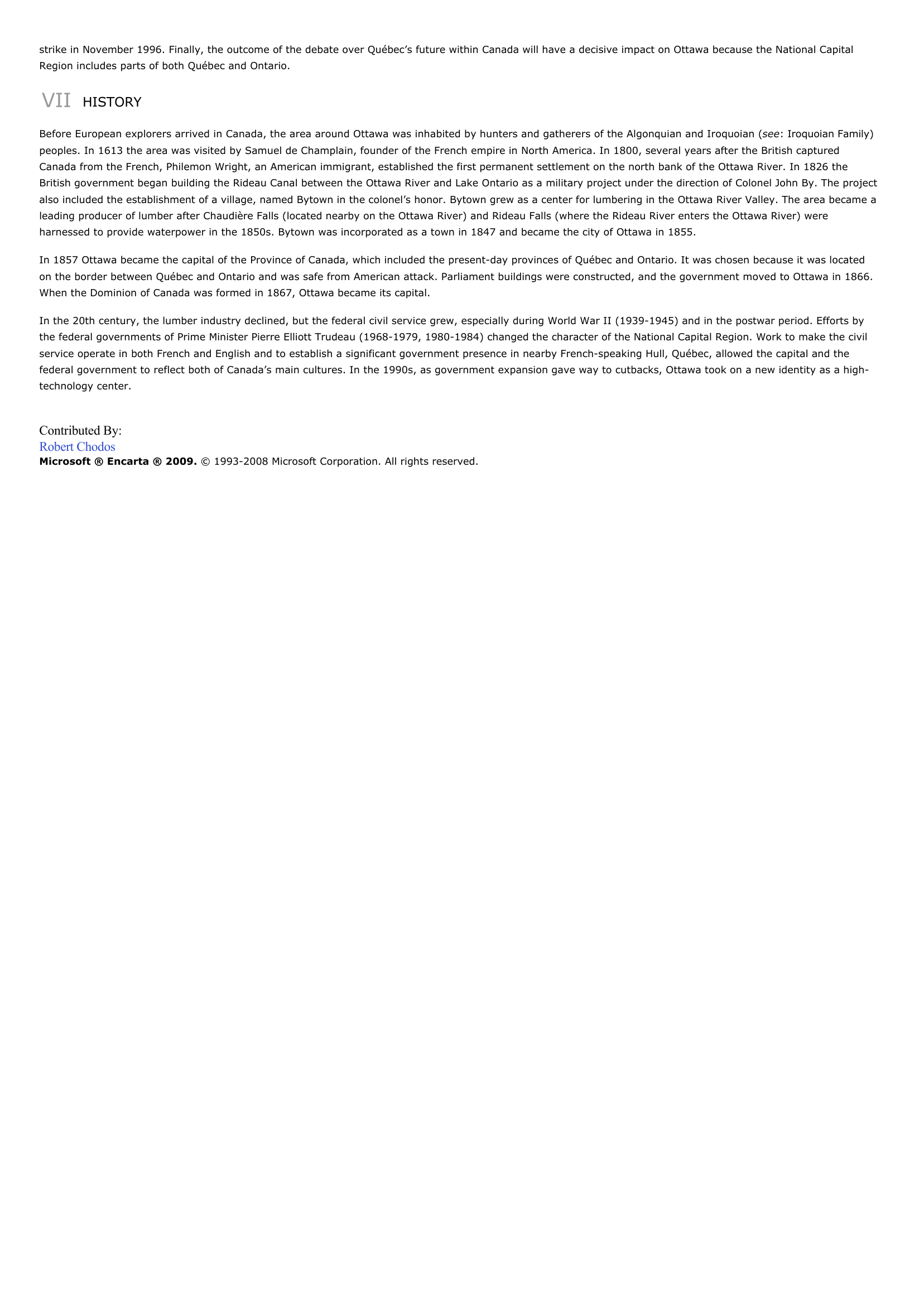Ottawa (city, Ontario) - Geography.
Publié le 03/05/2013

Extrait du document
«
strike in November 1996.
Finally, the outcome of the debate over Québec’s future within Canada will have a decisive impact on Ottawa because the National CapitalRegion includes parts of both Québec and Ontario.
VII HISTORY
Before European explorers arrived in Canada, the area around Ottawa was inhabited by hunters and gatherers of the Algonquian and Iroquoian ( see: Iroquoian Family) peoples.
In 1613 the area was visited by Samuel de Champlain, founder of the French empire in North America.
In 1800, several years after the British capturedCanada from the French, Philemon Wright, an American immigrant, established the first permanent settlement on the north bank of the Ottawa River.
In 1826 theBritish government began building the Rideau Canal between the Ottawa River and Lake Ontario as a military project under the direction of Colonel John By.
The projectalso included the establishment of a village, named Bytown in the colonel’s honor.
Bytown grew as a center for lumbering in the Ottawa River Valley.
The area became aleading producer of lumber after Chaudière Falls (located nearby on the Ottawa River) and Rideau Falls (where the Rideau River enters the Ottawa River) wereharnessed to provide waterpower in the 1850s.
Bytown was incorporated as a town in 1847 and became the city of Ottawa in 1855.
In 1857 Ottawa became the capital of the Province of Canada, which included the present-day provinces of Québec and Ontario.
It was chosen because it was locatedon the border between Québec and Ontario and was safe from American attack.
Parliament buildings were constructed, and the government moved to Ottawa in 1866.When the Dominion of Canada was formed in 1867, Ottawa became its capital.
In the 20th century, the lumber industry declined, but the federal civil service grew, especially during World War II (1939-1945) and in the postwar period.
Efforts bythe federal governments of Prime Minister Pierre Elliott Trudeau (1968-1979, 1980-1984) changed the character of the National Capital Region.
Work to make the civilservice operate in both French and English and to establish a significant government presence in nearby French-speaking Hull, Québec, allowed the capital and thefederal government to reflect both of Canada’s main cultures.
In the 1990s, as government expansion gave way to cutbacks, Ottawa took on a new identity as a high-technology center.
Contributed By:Robert ChodosMicrosoft ® Encarta ® 2009. © 1993-2008 Microsoft Corporation.
All rights reserved..
»
↓↓↓ APERÇU DU DOCUMENT ↓↓↓
Liens utiles
- Ottawa (city, Ontario) - geography.
- Buenos Aires (city) - geography.
- Dublin (city, Ireland) - geography.
- Mexico City - geography.
- Moscow (city, Russia) - geography.














